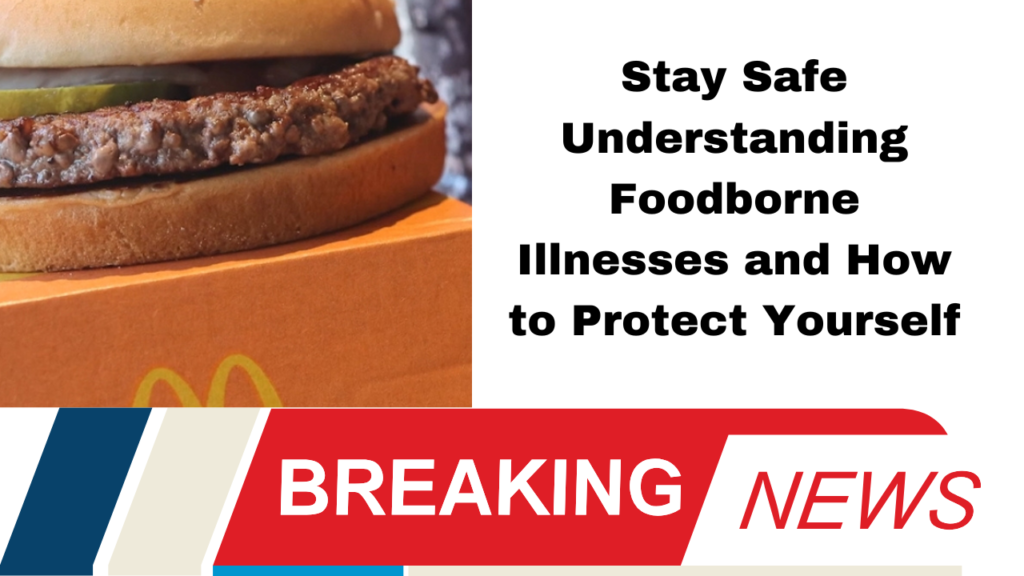The United States is witnessing a troubling increase in foodborne illnesses, as highlighted by a recent alert from the Centers for Disease Control and Prevention (CDC). An ongoing E. coli outbreak, associated with McDonald’s Quarter Pounders, has resulted in at least 49 reported illnesses across 10 states, including one death. Investigators are focusing on potential contamination sources, including slivered onions and beef patties.
Recent Outbreaks Highlight Urgency for Food Safety
This E. coli outbreak follows a significant listeria infection case linked to Boar’s Head liverwurst and other deli meats, which resulted in numerous hospitalizations and at least 10 fatalities. These incidents underscore the pressing need for enhanced food safety practices across the nations
Norovirus is the leading cause of foodborne infections in the U.S., responsible for nearly half of all outbreaks. It spreads easily through contaminated food, drinks, and surfaces. Campylobacter, often found in undercooked poultry, is another major bacterial culprit, along with salmonella, E. coli, and listeria.
E. coli O157:H7 is particularly concerning due to its potential to cause severe illness. It produces a toxin that damages the intestinal lining, leading to symptoms like abdominal cramps and bloody diarrhea. Complications can include hemolytic uremic syndrome, which can result in kidney failure.
Listeria, commonly linked to deli meats and unpasteurized products, poses serious risks to vulnerable populations, including pregnant women, the elderly, and immunocompromised individuals. While healthy adults may experience mild symptoms, listeria can lead to severe complications like miscarriage or stillbirth.
Symptoms of Foodborne Illnesses
Common symptoms of foodborne illnesses include:
Nausea
Vomiting
Diarrhea
Abdominal pain
Fever
Body aches
Symptoms can vary based on the organism involved, with E. coli infections often resulting in bloody diarrhea. Most infections resolve on their own, but severe cases may require medical attention, especially if symptoms persist or worsen.
Prevention How to Stay Safe
1. Practice Good Hygiene Frequent handwashing with soap and water is essential, particularly after using the restroom or handling food. If soap is unavailable, use hand sanitizer.
2. Cook Foods Thoroughly ensure meats and fish are cooked to the appropriate temperatures: poultry should reach 165°F (74°C), while fish should be cooked to 145°F (63°C). Using a food thermometer can help prevent undercooking.
3. Wash Produce Properly always wash fruits and vegetables under running water, even if you plan to peel them. Avoid using dish soap or disinfectants, as they can leave harmful residues.
4. Store Food Safely food should not be left out at room temperature for more than two hours; this time decreases to one hour in warmer outdoor conditions. Refrigerate leftovers promptly.
5. Avoid High-Risk Foods Vulnerable individuals, including the elderly, young children, pregnant women, and those with weakened immune systems, should avoid raw or undercooked meats, unpasteurized milk, and deli meats.
The rise in foodborne illnesses calls for heightened awareness and proactive measures. By understanding the common causes and symptoms, as well as adhering to safe food handling practices, individuals can significantly reduce their risk of infection. Keeping informed through local health advisories and following safety guidelines is crucial for protecting yourself and others from these preventable illnesses.
For those in the food industry or serving food to the public, rigorous hygiene and cooking practices are essential to safeguarding community health. As we continue to navigate food safety challenges, awareness and education remain our best defenses against foodborne diseases.











More Stories
Understanding America’s Regional Patchwork A Guide to the Key Political Areas
The Electoral College Debate A Closer Look at Its Impact on Modern Elections
November’s Unsettling Tropical Outlook Potential Storms Loom in the Atlantic